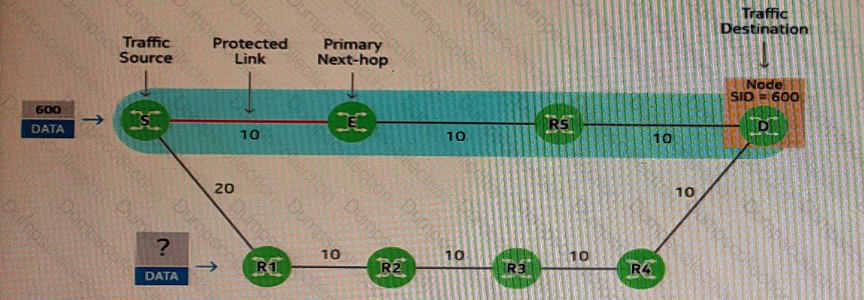Nokia Nokia Segment Routing Exam 4A0-116 Exam Dumps: Updated Questions & Answers (December 2025)
The exhibit highlights in blue the primary path of a segment going from router S to router D. The exhibit also shows a backup path. The protected link fails and fast re-route is triggered on router S. If the backup path has been calculated using standard LFA, how many SIDs are included in the label stack of the data packet forwarded to router R1?

An SR-TE LSP with a path definition that includes router R4 as a loose hop and for which Seamless-BFD has been enabled is following the path shown in the exhibit. What happens after router R4 fails if the routers along the path follow the default behavior?

Which of the following statements about SR-TE administrative constraints is FALSE?
OSPF is being used for segment routing with traffic-engineering (SR-TE). The traffic-engineering option has been set to "sr-te false". Which of the following statements is TRUE?
Which of the following steps is NOT required when configuring IS-IS to support Segment Routing?
Which of the following statements about path definitions is FALSE?
Which of the following statements about a Segment Routing SID is FALSE?
In which of the following aspects does the configuration of flex-algo LSPs have an advantage over the configuration of SR-TE LSPs?
Which of the following types of information is considered by a stateless PCE when it processes a new LSP path calculation request?
Which of the following list of SR-TE attributes has to be advertised among routers?

